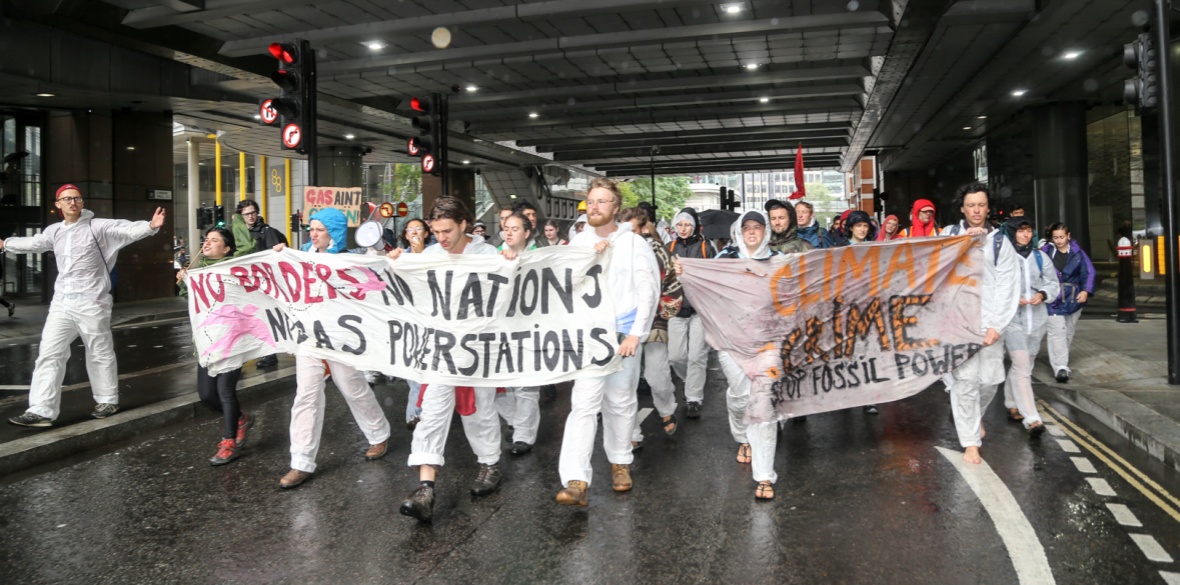“PROTEST and plant!” might be the ideal slogan to sum up today’s developments in the struggle against global warming and climate change.
Hundreds of mostly young protesters blockaded Scottish & Southern Electricity’s (SSE) Keadby 2 construction site in Lincolnshire and protested at the Drax corporation’s headquarters in London.
Both giant companies are central to the continuing “dash for gas” that threatens to divert, delay and even undermine progress towards the aim of net-zero greenhouse gas emissions by 2050.
SSE is building a huge new gas-fired electricity-generating plant, while Drax intends to convert two former coal-burn power stations to gas.
Although using gas as a fuel in electricity generation produces significantly less pollution and fewer carbon emissions than coal, it nevertheless adds substantially to global warming for as long as it continues.
Company and government protestations that a large amount of new gas-fired capacity is essential as a stop-gap until non-fossil renewable fuels are fully on-stream are less than convincing.
After all, the “dash for gas” instead of coal since the early 1990s has not developed by accident and coincidence, although powerful pressure groups would have us believe otherwise.
The British coal industry was destroyed primarily for political reasons, to inflict a historic defeat on the most powerful politically conscious section of the trade union movement.
Rather than manage a slower, more humane rundown of deep-mined coal combined with immediate massive investment in “clean coal” and carbon-capture technology, Tory and New Labour governments turned to imported and dirty opencast coal, together with finite supplies of North Sea oil and natural gas.
The conversion of power plants to oil and gas — the latter made possible by the 1991 EU directive on electricity generation — instead of early investment in wind, solar, thermal and other renewable resources then created a dependency which has turned Britain back into a net importer of energy.
We have returned to the same levels of vulnerability as in the early 1970s, now relying upon overseas suppliers to meet between one-third and one-half of our energy needs.
Central to this regression has been the privatisation of coal, oil, gas and electricity generation and supply.
The corporate vultures were invited in by their Tory and New Labour supporters to make a killing out of household and commercial consumers.
At the European level, the Third Energy Package in 2007 set the continental framework for all-out marketisation and privatisation, some of it enforced soon afterwards by the “Troika” bank bailouts.
One consequence has been the collapse of responsible long-term planning and investment in generation and storage capacity, notably in Britain.
The other has been the slow and inadequate turn to safe, non-nuclear sources that do not warm up the planet, drive desertification, raise sea levels and unleash yet more destructive weather systems on some of the world’s poorest people.
For the Big Six energy monopolies, the dash for profit comes first. US gas-burn power producers have grossly under-reported leakages of methane, a far more severe greenhouse gas than CO2.
As the government’s committee on climate change reminded us today, one way of counteracting carbon emissions is to plant more trees.
The CCC is right to call for a big expansion of existing programmes, while the announcement of a major urban initiative is to be welcomed.
But why is the extent of tree-planting so much greater in Scotland, and to a lesser degree Wales, than in England? Why is permission granted much more readily? We need answers and fast.











